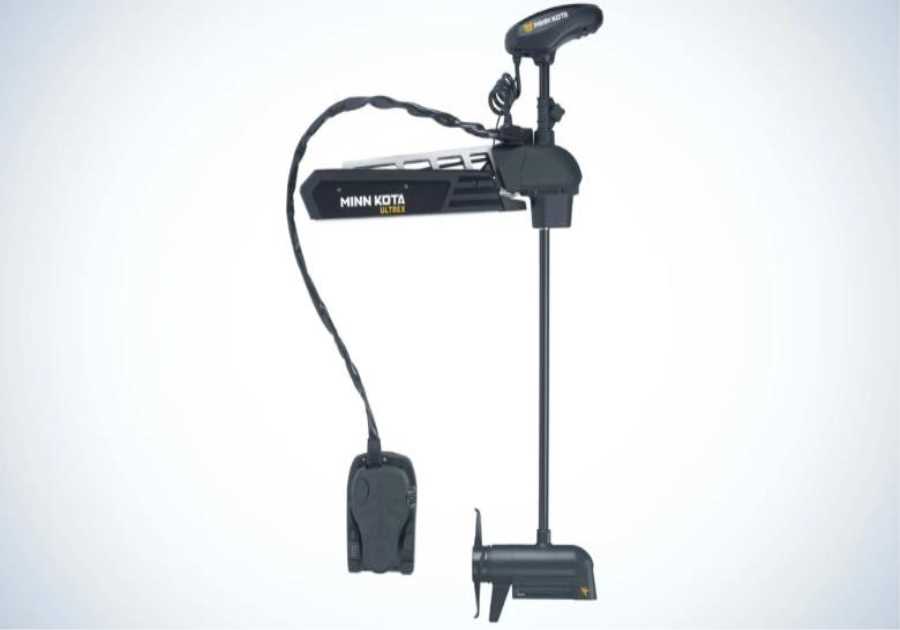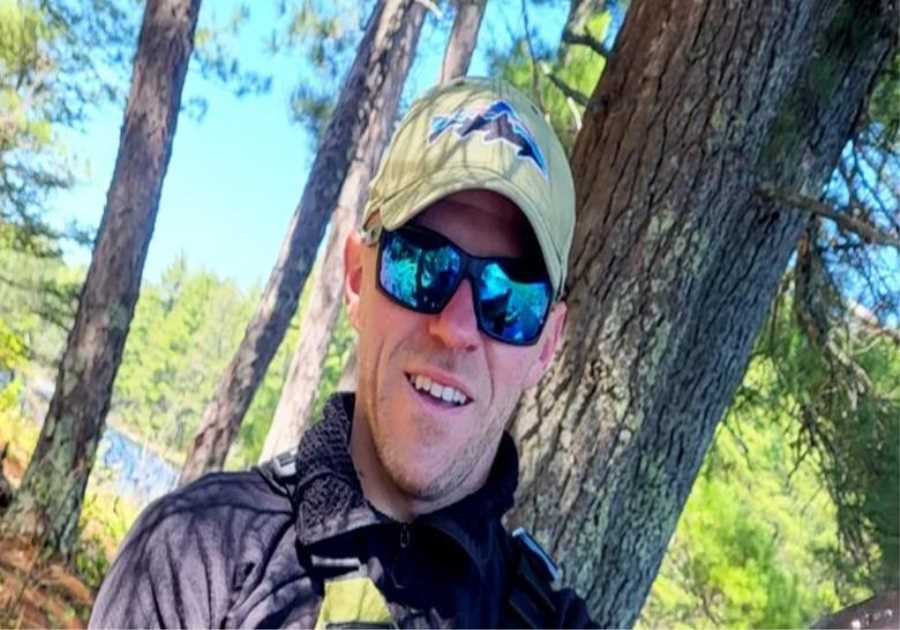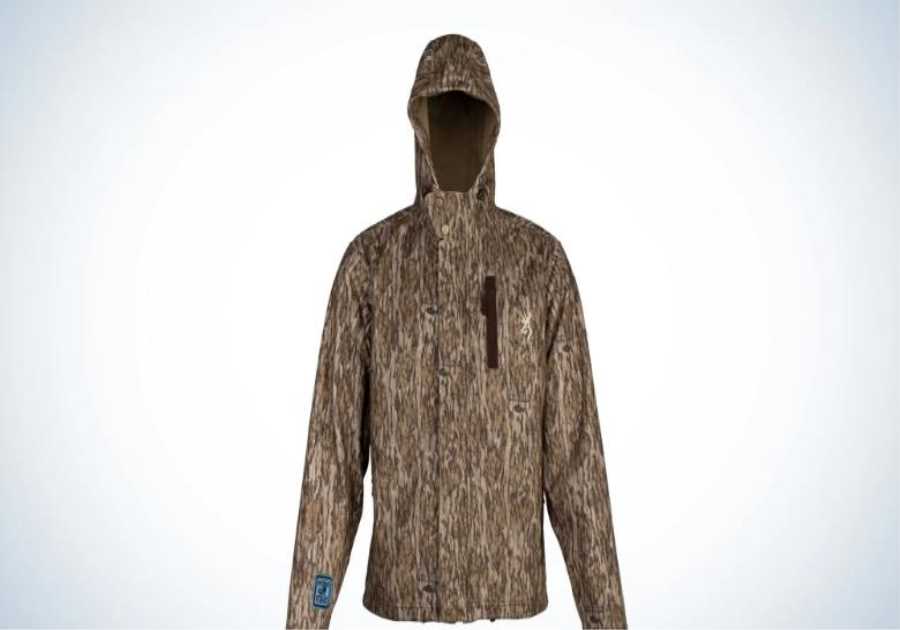||
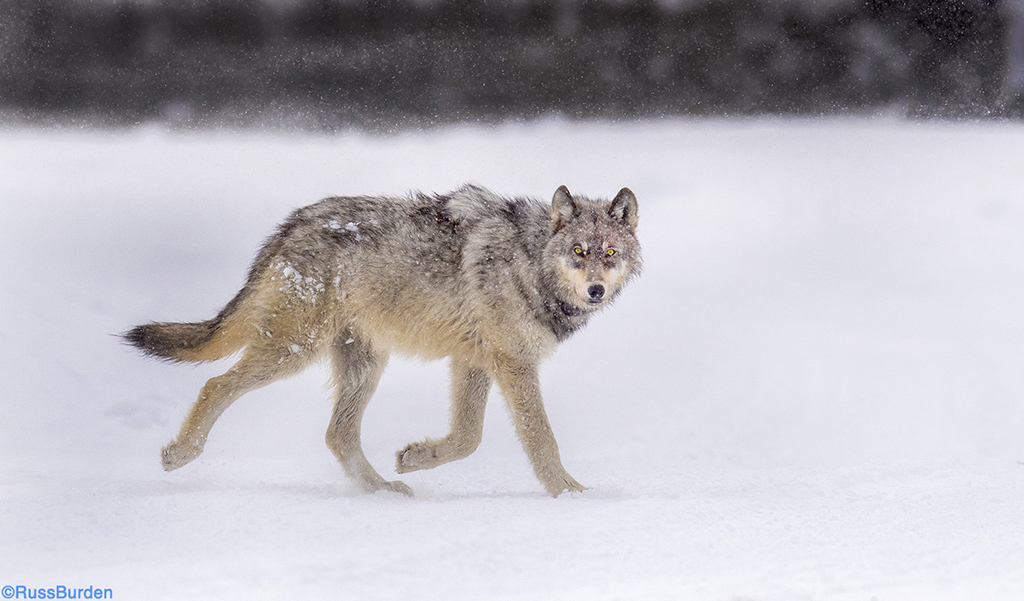
What makes some wildlife images more powerful than others? I’ve had this discussion with numerous photographers many times. Some of the characteristics that were cited include great action, humor, fantastic settings and clean backgrounds. Given enough time, the discussions could have gone on for hours. When lulls occurred, I always added a quip that got them to think. I stated, “A good wildlife photo should be wild.” Quizzical expressions abounded along with a few responses of “Well that’s obvious.” I responded by clarifying with the following and the discussion resumed. It proceeded to carry on for hours!
To help make a wildlife photo stand out amongst the millions made every year, make it WILD with weather. Dramatic Weather contributes to great conditions. I continue the talk and add that Interaction between multiple subjects should be unique, the Light should be special, and a Distinctive aspect should be depicted. If you noticed a pattern or questioned why certain words in this paragraph are bold and in red, good for you. If not, look back at each bold red letter and put them together—now that’s WILD!
W = Weather
It’s perfect that weather and wolf both start with “W” to double emphasize the concept of the photo above that illustrates it. I can’t deny that I love to make images in clear morning light with no clouds, but there’s nothing like the drama and intrigue that’s associated when the weather is adversely cold, snowy, blustery, teeming rain, windy, etc. It adds a more intense dimension to the image as it tells a story of the harsh conditions under which the animals have to survive. That being said, I also waited for the wolf to make eye contact. I also made sure the background behind him was all white and the subject didn’t merge with the dark row of trees. I also chose the pose with two paws off the snow. If weather can help add drama to your images, go for it.
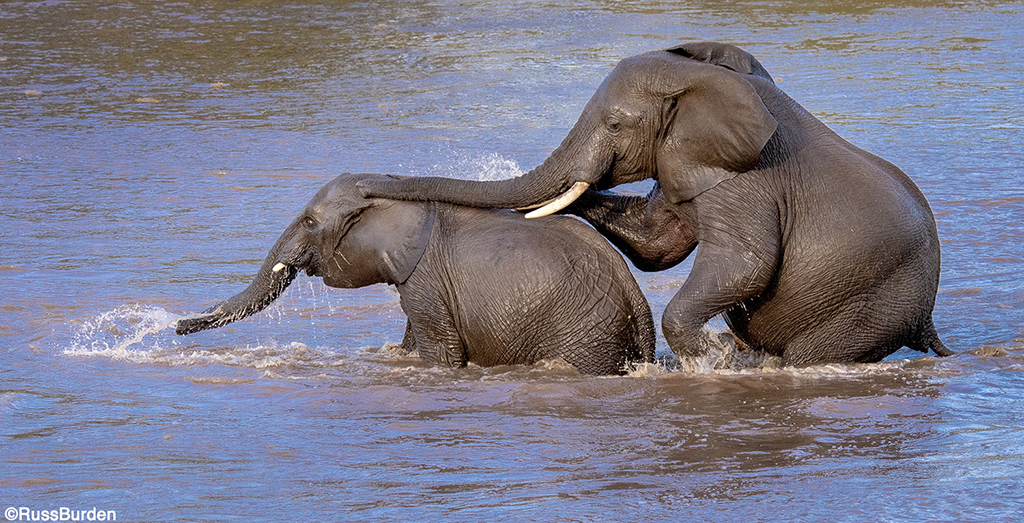
I = Interaction
It’s difficult enough to show the action of a single animal let alone more than one. When interaction of multiple subjects occurs, you must contend with mergers, greater areas of potential background distractions, head angles of all the subjects, the way in which they connect and more. In the photo of the two young elephants, the light was late afternoon, so contrast wasn’t a problem; the way in which they connect is like two pieces of a puzzle that fit well; the entire background is clean; and both are depicting action. When you encounter multiple subjects, be patient and wait for the moment when it all comes together. It doesn’t always happen, but when it does, the reward is high.
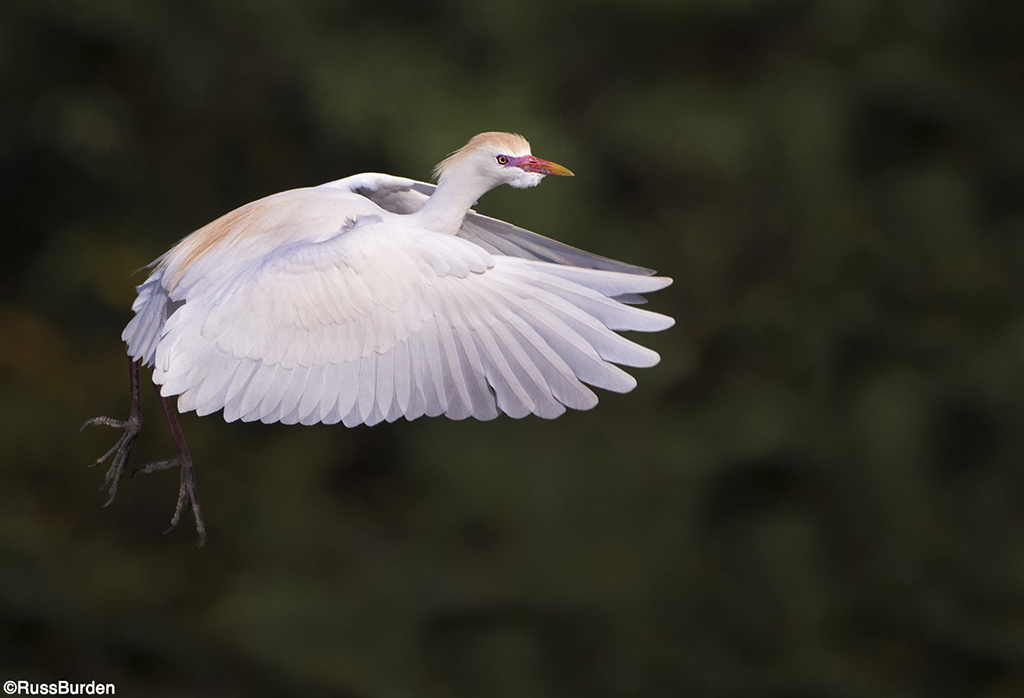
L = Light
I most definitely extoll the virtues of strong sunrise and sunset light. Unfortunately, the weather gods don’t always bestow me the honor of their presence. When I’m not dealt the hand I desire, I make the most of the cards I hold and play them to their max. In the image of the flighted cattle egret, I knew I had to find a clean background since the light gray sky that surrounded most of the area didn’t allow the bird to stand out. A white bird against a gray sky produces a bland photo. There was a small window of dark vegetation in the egret’s flight trajectory, so I set up my tripod and waited for the few times he flew in that direction. I used a long lens with a wide aperture to help keep the background out of focus. I also set my exposure compensation to -1 1/3 stops. Because the background was dark, the meter wanted to “add” light, which would have overexposed the delicate whites of the bird. When it comes to light, it behooves you to learn how to read it and know how to adjust your settings so it makes the “correct” decision.
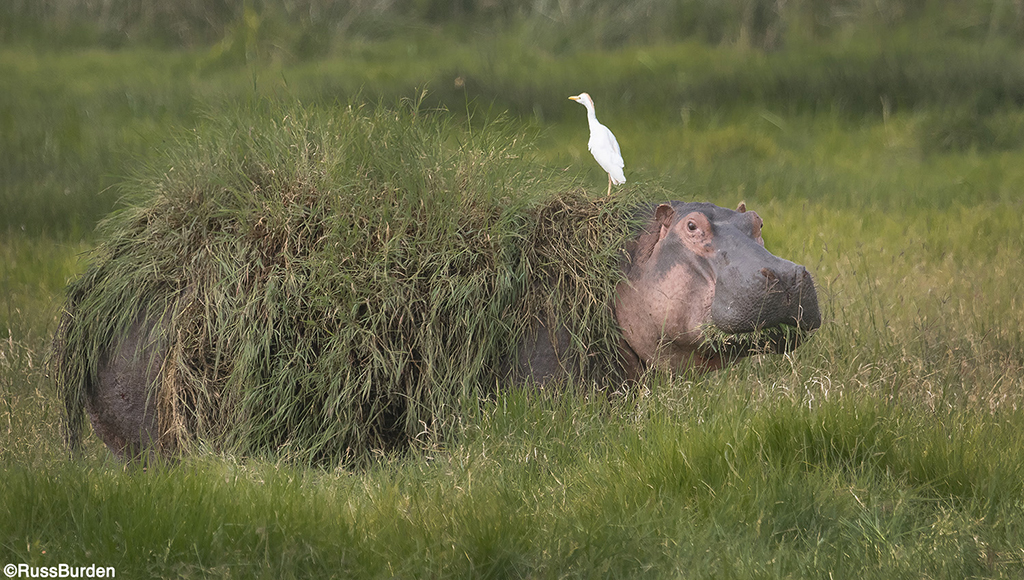
D = Distinctive
Find something unique and take advantage of the situation. Exhaust all possibilities in the way you go about making the capture. Photograph in every which way possible. Be sure to use a variety of focal lengths and also camera orientations, both vertically and horizontally. Let the given focal length dictate the orientation. In the photo of the hippo, it was so camouflaged we almost drove past it until it raised its head. We thought it was an egret on a mound of grass. We stayed with both the entire time the hippo continued to consume the grasses and then decided to move on. He gave us about 10 minutes of “uniqueness.” It was a special moment in the Ngorongoro Crater.
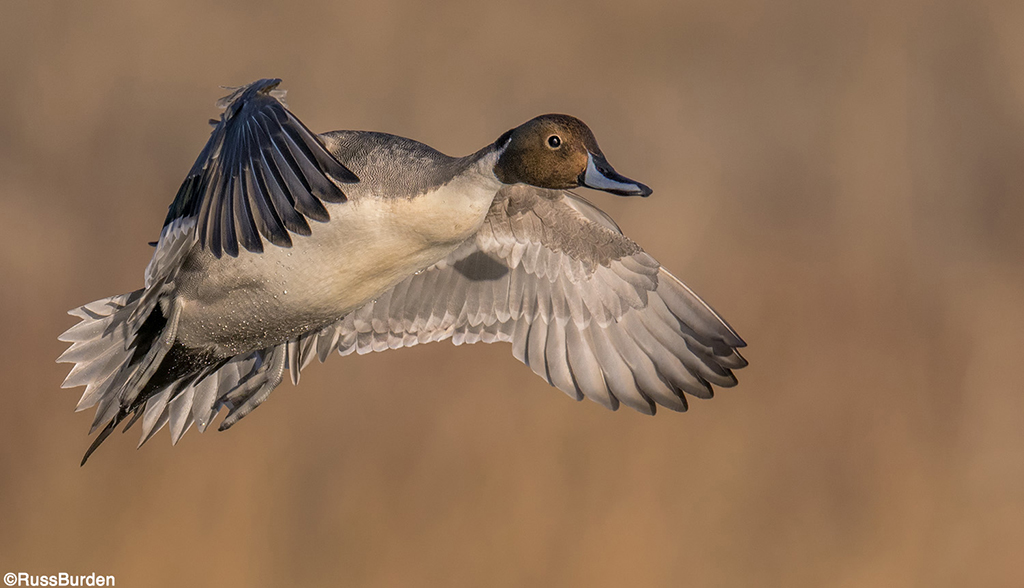
Pintail Duck In Flight
This image doesn’t correlate to the letters in WILD, but I chose it to illustrate four very specific aspects of good wildlife photography. Images that show action can be very dramatic. Pair the action with a totally out-of-focus background so the subject pops off the page. Be sure the direction of flight has the bird coming toward the camera. Finally, make your images in early or late light as the color and angle are conducive to creating powerful photos.
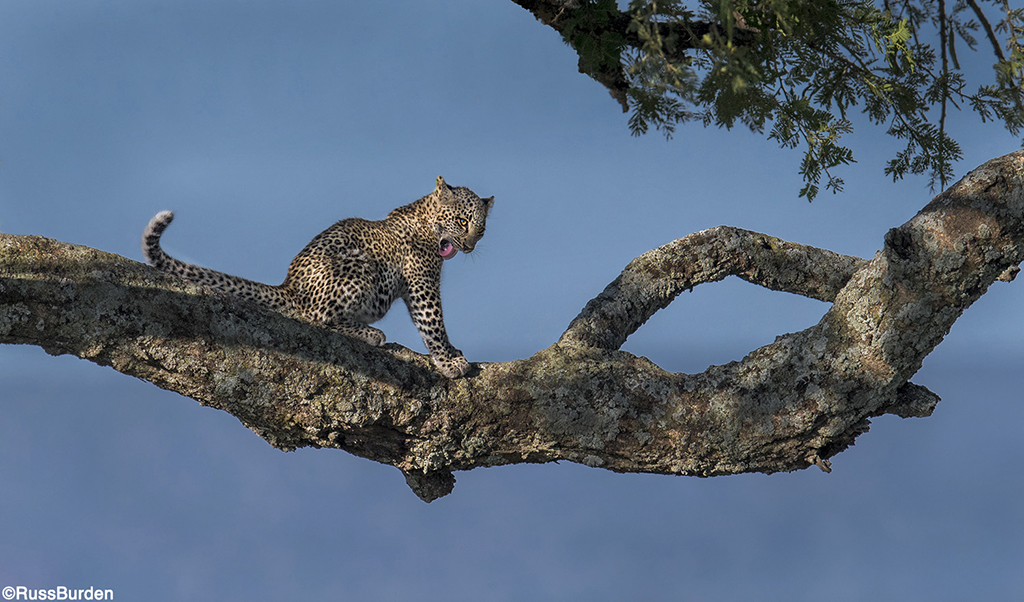
Leopard In The Tree
Again, this image doesn’t correlate to the letters in WILD, but I want to emphasize another very important aspect of wildlife photography too often overlooked. It’s great to fill the frame with a dramatic photo of an animal, but it’s also important to illustrate where it lives, hunts, migrates, dwells, etc. Show the environment! Not everyone is familiar with the fact leopards spend a huge percentage of their lives in trees to sleep, preen, hide their prey and consume what they hunt. When the opportunity arises, zoom your long lens to the wider focal length and experiment with the composition. If the area is scenic, use a wide angle and place the emphasis on the environment with the animal as a small focal point. It’s a great way to add diversity to your files.
Just because you own a long lens doesn’t guarantee better wildlife shots. The most important aspect is knowing how to use it and take advantage of its benefits. As a matter of fact, if you continue to use poor long-lens photographic practices, the only guarantee is your “snapshot images” will be more magnified. Adopt the above principles of good wildlife photography and get into the field and practice. Bring your “WILDlife” photography to the next level.
To learn more about this subject, join me on a photo safari to Tanzania. Visit www.russburdenphotography.com to get more information.
The post Put The Wild In Your Wildlife Photos appeared first on Outdoor Photographer.
||-------------------------------------
By: Russ Burden
Title: Put The Wild In Your Wildlife Photos
Sourced From: www.outdoorphotographer.com/tips-techniques/wildlife-techniques/put-the-wild-in-your-wildlife-photos/
Published Date: Mon, 06 Feb 2023 08:01:45 +0000
Did you miss our previous article...
https://playeverysport.com/recreational-sports/custom-paddle-boards-make-it-unique-make-it-the-best
.png)

